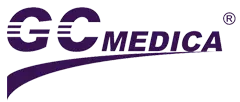-
Laparoscopic & Endoscopic Products
-
Laparoscopic Procedures
- Heated Insufflation Tube
- Laparoscopic Smoke Filter
- High FLow CO2 Laparoscopic Insufflation Filter Tube Set
- Veress Needle
- High Flow Heated Insufflation Tube
- Arthroscopy Irrigation Set
- Disposable Bladeless / Bladed Trocar with Thread / Balloon
- Disposable Wound Protector
- Disposable Height Changeable Wound Protector
- Retrieval Bag
- Laparoscopic Suction Irrigation Set
- Laparoscopic Insufflator
- Endoscopy Care and Accessories
-
Laparoscopic Procedures
- Respiratory & Anesthesia
- Cardiothoracic Surgery
- Gynaecology
-
Urology
- CathVantage™ Portable Hydrophilic Intermittent Catheter
-
Cysto/Bladder Irrigation Set
- M-easy Bladder Irrigation Set
- B-cylind Bladder Irrigation Set
- S-tur Bladder Irrigation Set
- S-uni Bladder Irrigation Set
- B-uro Bladder Irrigation Set
- Premi Bladder Irrigation Set
- J-pump Bladder Irrigation Set
- J-tur Bladder Irrigation Set
- H-pump Bladder Irrigation Set
- Sup-flow Bladder Irrigation Set
- Maple Irrigation Set
- Peony Irrigation Set
- Nelaton Catheter
- Urinary Drainage Bag
- Urinary Drainage Leg Bag
- Enema Kits
- Sitz Bath Kits
- Click Seal Specimen Container
- Silicone Male Catheter
- Spigot Catheter and Adaptor
- Sandalwood Irrigation Set
- Freesia Irrigation Set
- Daffodil Irrigation Set
- Single-Use Digital Flexible Ureteroscope
- Enteral Feeding Products
- Dental
- Fluid Management
- Warming Unit and Warming Blanket
-
Operating Room Necessities
- Nasal and Oral Sucker
- Disposable Medical Equipment Covers
- Magnetic Drape / Magnetic Instrument Mat
- Suction Handle
-
General Surgery
- Perfusion Atomizer System
- Gastric Sump Tube
- Surgical Hand Immobilizer / Lead Hand for Surgery
- Administration Set for Blood
- Ear/Ulcer Syringe
- Bulb Irrigation Syringe
- Toomey Irrigation Syringe
- Mixing Cannula
- Basin Liner/Basin Drape
- Medical Brush
- Sponge Stick
- Suture Retriever
- Needle Counter
- Disposable Calibration Tube
- Heparin Cap
- 100ML Bulb Irrigation Syringe
- Scleral Marker
- Surgical Light Handle
- Mucosal Atomization Device
- Durable Medical Equipment
- Patient Handling System
- PVC-FREE Medical Device
- Emergency
-
Patient Air Transfer Mattress Online WholesaleDec 17 , 2024
-
Cystoscopy Irrigation Set Online Wholesale | GCMEDICADec 17 , 2024
-
Patient Warming Device and Blanket Online wholesaleDec 16 , 2024
-
CathVantage™ Twist Intermittent Catheter | GCMEDICASep 20 , 2024
-
Single-Use Digital Flexible Ureteroscope | GCMEDICASep 20 , 2024
What is the Theoretical Basis for Preoxygenation Before Endotracheal Intubation?
Maintenance of hemoglobin oxygen saturation during airway management is critical to patient safety. Desaturation to below 70% oxygen saturation puts patients at risk for arrhythmias, hemodynamic decompensation, hypoxic brain injury, and death. A major challenge for emergency physicians is prompt intubation to ensure airway patency without severe hypoxia or aspiration. In patients without pulmonary disease, the risk of hypoxic saturation from preoxygenation followed by endotracheal intubation is low if hemoglobin is adequate, metabolic demands are low, and pulse oximetry is 100% with room air inhalation .
In contrast, septic patients with multilobar pneumonia who have developed hypoxemia are at immediate risk of critical tissue hypoxia at the time of endotracheal tube intubation despite high-flow 100% oxygen. Preoxygenation allows a safety buffer during hypopneas and apneas, and it prolongs the safe duration of apnea, defined as the time until the 88%-90% oxygen saturation level is reached, to allow for definitive airway placement. When patients are below this oxygen saturation level, their state is on the steeper part of the oxyhemoglobin dissociation curve and can drop to critical levels of oxygen saturation in an instant.
1. The basis of pre-oxygenation before endotracheal intubation
Standard induction of anesthesia in patients undergoing elective surgery is by administration of sedatives, artificial ventilation, muscle relaxants, and continued artificial ventilation until a definitive airway is placed. Preoxygenation in these patients is not mandatory because ventilation is continuous throughout the induction period and the patients have normal physiologic and metabolic demands.
Rapid induction anesthesia has been developed in the field of anesthesia for surgical patients with high risk of aspiration due to intestinal disease, physical fitness, and critical illness. This technique administers both sedation and muscle relaxants, with no ventilation (unless hypoxemia prevention is required) until the muscle relaxant is effective. This approach has been applied to emergency departments where all patients requiring airway management should be considered at risk for aspiration. The default technique is rapid induction intubation.
Before RSI, patients inhaled with room air, during the period before endotracheal intubation after administration of sedatives/muscle relaxants, will have a drop in oxygen saturation over a period of 45-60 seconds. In the 1950s, anesthesiologists realized that the safest way to perform RSI was to fill the patient's alveoli with high concentrations of inspired oxygen prior to intubation. Studies have shown that the time to desaturation is significantly increased if preoxygenation prior to endotracheal intubation is given with 100% oxygen rather than room air.
2. Goals of preoxygenation of endotracheal intubation in the emergency room
(1) Make the patient's oxygen saturation as close to 100% as possible.
(2) Preoxygenation of endotracheal intubation to denitrogenate the residual lung volume (maximize the oxygen storage of the lung).
(3) Denitrogenation and maximizing blood oxygenation.
The first two goals are necessary, while the third goal has little effect on increasing the duration of safe apnoea because oxygen is poorly soluble in blood and its oxygen storage capacity is relatively small compared to lungs.

